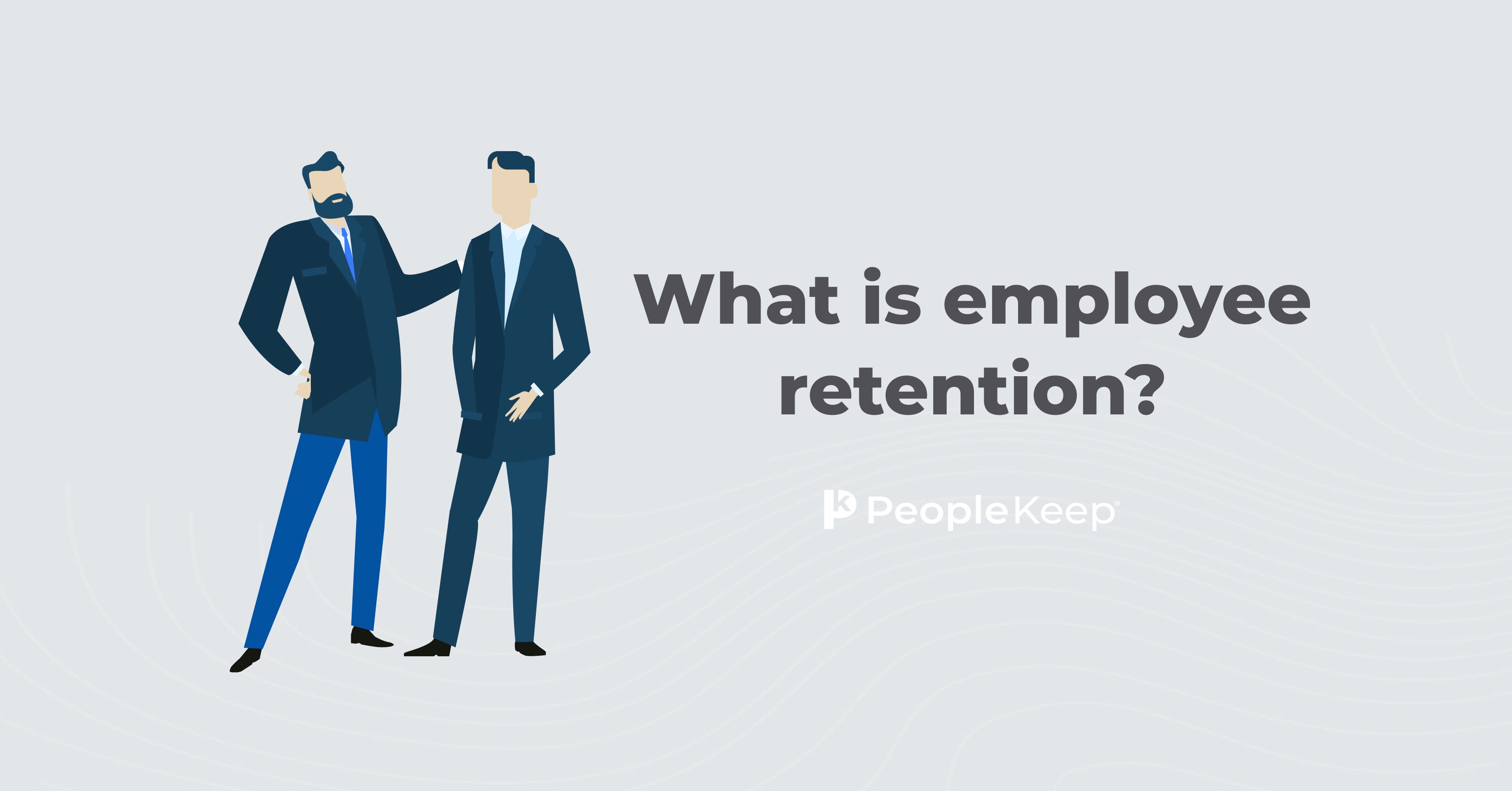What is indirect compensation and why is it important?
By Chase Charaba on October 22, 2024 at 8:00 AM
When it comes to effective employee retention and recruitment, a competitive salary alone may not be enough. Employees want additional benefits and perks. This is due to a tight labor market, rising inflation, and lower consumer confidence in the economy.
Offering indirect compensation, such as employee benefits, is an excellent way to attract ambitious job seekers. They can also improve the productivity of your current employees.
In this blog post, you'll learn the following:
- What indirect compensation is and see direct and indirect compensation examples.
- The importance of offering indirect compensation to employees.
- Popular employee benefits you can offer to recruit and retain top talent.
What is indirect compensation?
Indirect compensation is a type of payment to an employee that doesn't involve directly paying a wage or salary.
Examples of an indirect compensation arrangement include offering your employees:
- Health insurance
- Life insurance
- Employee stipends (also called fringe benefits)
Sick leave, retirement plans, and paid time off (PTO) are also examples of indirect compensation.
This differs from direct compensation, which is the payment of money directly to your employees in exchange for their work.
Direct compensation includes:
- Wages or base salary, bonuses
- Overtime pay
- Tips and commission
- Stock purchases
- Other forms of additional compensation
In the table below, we've provided both direct and indirect compensation examples.
Indirect compensation vs. direct compensation chart
|
Type of compensation |
Examples |
|
Direct compensation |
Pay
Incentives
Deferred pay
|
|
Indirect compensation |
Employee benefits
Pay for time not worked
Other perks
|
|
Non-financial compensation |
|
Benefits that you can't attach a monetary value to are called non-financial compensation or intangible compensation. These benefits include flexible schedules and remote work. It can also include employee recognition and awards, as long as those awards don't contain some sort of prize like a gift card.
The combination of direct and indirect financial compensation and intangible compensation make up your employees' total compensation.
Why offer indirect compensation to employees?
Employees receive direct compensation for their work. But, indirect compensation and non-financial benefits supplement wages. This helps you build company loyalty and retain employees.
Reduce employee turnover
Employee benefits play a crucial role in reducing employee turnover. According to Gallup1, 16% of employees left their company for better pay or benefits in 2023.
Offering a comprehensive employee benefits package helps your organization compete for talent. To retain your employees, you need to understand your competitors and what they offer employees. If your competitors offer more benefits, your employees are more likely to apply.
If your employees receive benefits that fit their needs, they'll be less likely to leave in search of better opportunities.
Attract top talent
When hiring new employees, you need to make your organization stand out to job candidates. Offering employee benefits as part of your competitive compensation package will help you attract the qualified candidates you want.
According to our 2024 Employee Benefits Survey, 81% of employees said the benefits package an employer offers is an important factor in whether they accept a job offer from the organization.
You'll maintain a competitive edge in a tight labor market by offering additional perks alongside a competitive salary.
Improve employee morale
Providing employee benefits can also boost productivity and improve employee engagement and morale. When your employees are taken care of, they'll feel valued.
Employees who enjoy working for your organization and have high job satisfaction will be more likely to recruit others when you have a job opening. Employee referrals help reduce your talent acquisition costs.
Keeps you compliant
State or federal laws may require you to offer indirect benefits in some cases.
For example, if your organization has 50 or more full-time equivalent employees (FTEs), you must provide a health benefit that meets minimum essential coverage (MEC) and minimum value standards.
Which employee benefits are most important for attracting and retaining employees?
Offering employee benefits is vital for recruitment and retention. But it's even more important to provide the right employee benefits. Your benefits package should reflect the needs and wants of your employees and the ideal candidates you wish to attract.
A great place to start is by conducting an employee benefits survey. You can use your survey results to determine which benefits your employees value most.
If you have an in-office staff in a large city, commuter benefits such as transit or parking passes would make a great perk. But remote workers won't find this beneficial. While you can offer benefits based on specific employee categories, such as location, it's best to provide personalized benefits that give your employees control over their benefits.
So, what are the top indirect compensation offerings for your workforce?
According to our 2024 Employee Benefits Survey, the most-valued employee benefits include:
- Health benefits
- Dental insurance
- Paid time off (PTO)
- Retirement benefits
- Vision insurance
- Mental health/wellness benefits
- Life insurance
- Paid family leave
- Remote work/flexible work schedules
- Professional development
We'll look at a few of these sought-after benefits in more detail in the sections below.
Health benefits for employees
Employers now have more employee health benefit options today than ever before. We'll look at a few common health benefits you can offer your employees.
Traditional group health insurance
Many organizations offer traditional group health insurance to their employees. However, recent cost increases and the growth of healthcare consumerism have pushed employers toward more personalized health benefits.
There are group health insurance policies available for organizations of all sizes. If you have fewer than 50 employees, you may be able to offer your employees a small group health insurance plan. You can purchase these small business health plans from an insurance company or through a Small Business Health Options Program (SHOP) exchange.
Traditional group health insurance is an excellent employee benefits option for in-office employees and recruitment because employees are likely familiar with how group health insurance works.
But, group health insurance is a one-size-fits-all plan. It won't work for all of your employees' wants and needs.
Health reimbursement arrangements (HRAs)
Instead of offering a group health insurance policy, you can provide your employees with a health reimbursement arrangement (HRA). HRAs can be a better fit for organizations than group health insurance because they give employees freedom over their healthcare.
With an HRA, employees get reimbursed by their employer for their qualifying medical expenses.
Three of the most popular types of HRAs are the:
- Qualified small employer HRA (QSEHRA) - A health benefit for organizations with fewer than 50 FTEs that don’t offer a group plan
- Individual coverage HRA (ICHRA) - Great for organizations of all sizes that want to customize eligibility and monthly allowances with employee classes
- Group coverage HRA (GCHRA), also known as an integrated HRA - Integrates with your existing group health insurance policy to supplement your benefit
With a QSEHRA or an ICHRA, employees can choose an individual health insurance policy that best fits their needs. Then, they can submit their monthly insurance premiums and qualifying out-of-pocket medical expenses for reimbursement up to their benefit allowance.
Health stipend
You can also provide your employees with a health stipend. Health stipends allow you to give your employees money for their medical expenses, similar to an HRA but with fewer restrictions.
There are no employee eligibility requirements and no minimum or maximum allowance amounts. Health stipends are taxable, so you must report this amount as income on your employees' W-2s.
A health stipend allows organizations to create fully customizable health benefits that best fit their employees' needs.
Offering wellness benefits
Providing your employees with a wellness benefit is important for reducing burnout and improving employee productivity.
One way that organizations accomplish this is through an employee wellness program. However, even offering a few wellness benefits can go a long way toward improving employee well-being and retention.
Here are some common examples of wellness programs and benefits:
- Smoking cessation programs
- Employee health screenings
- Stress management classes
- Gym memberships
- Wellness stipends
If you want to provide your employees with a flexible wellness benefit, you can consider a wellness stipend.
A wellness stipend is an excellent indirect compensation option that allows you to give your employees money for their wellness expenses. You simply set up a monthly allowance for expenses like gym memberships or mobile wellness apps.
With a taxable wellness stipend, your employees can purchase the expenses they want, giving them more control over their benefits.
Conclusion
Offering indirect compensation can help keep your current employees happy and entice potential employees to join your team. Without an indirect compensation package, your employees are more likely to leave for better job opportunities elsewhere.
This article was originally published on April 27, 2022. It was last updated on October 22, 2024.
Check out more resources
See these related articles

What is employee retention?
Employee retention refers to a company's ability to keep its workforce over time. Explore its importance, challenges, and ways to improve it.

Can I offer a health insurance stipend?
Interested in offering a health stipend in lieu of health insurance? Learn how stipends work, their tax implications, as well as other tax-free options.

Small group health insurance for beginners
Explore the basics of small group health insurance. Learn how it works, who qualifies, and how to choose the best plan for your small business.



